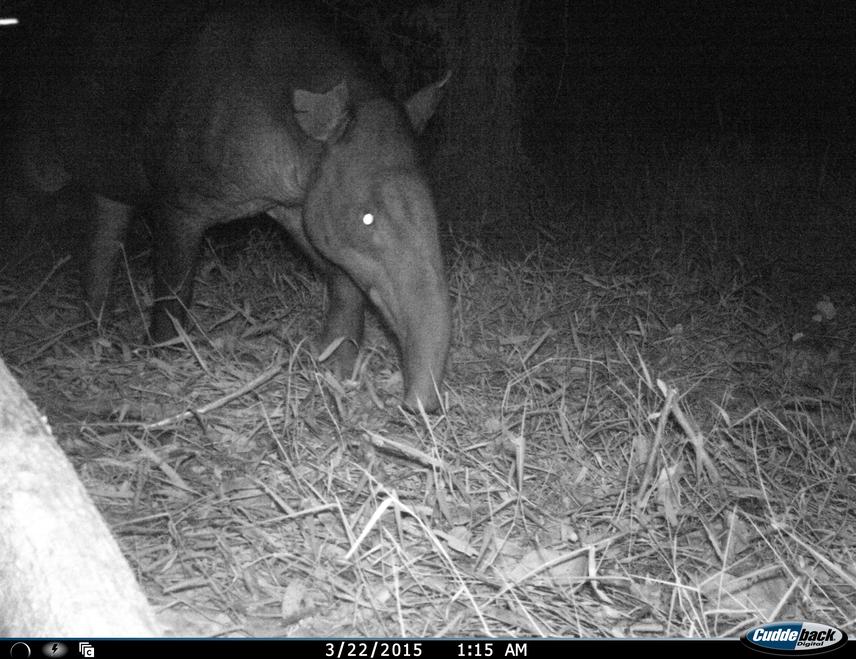Natalia Lucia Carrillo Reyna
We want to describe the variation on habitat preferences of Baird's tapir inside the Calakmul Biosphere Reserve and in human communities of the hinterland, know the potential change in landscape structure and estimate their effects on population of tapirs.

Too many natural protected areas created to maintain biodiversity and his habitat are established in places used by rural population. With accelerated population growth, outside the limit of the Calakmul Biosphere Reserve in Campeche, México inhabiting almost 27,000 persons who extract and exploit the natural resources and the few water bodies in the region. These factors induce the increase in the rate of encounters between the wild fauna and humans. It is important identify the habitat elements that trigger the movement of the organisms outside the limits of the natural protected area, and their habitat use in these zones. Knowing this data we can predict how will be affected the populations of these organisms, if the habitat they are using are deforested and how this factor influence their populations inside the natural protected area.
Tapirs are very important to maintain ecological processes like herbivore and seed dispersal-predation, in Mexico they are important in the diet of jaguars, but they are sensitive to the human perturbation so they are threatened in their whole distribution area. Throughout the use of cameras traps and Geographic Information Systems, in this research we will evaluate the effect of human activities on individuals of Baird's tapir (Tapirus bairdii) that migrate outside the protected area of Calakmul Biosphere Reserve, trying to identify the factors associated with tapir’s movement and its preferred habitat. Subsequently we will evaluate the pattern that follows the forest structure outside the protected area to predict how this process will affect the connectivity between the protected area and the remnants of vegetation. With this investigation we could predict how will affect the tapir populations that inhabiting the Mayan forest in response to the human population. The final goal of this research is to propose management plans to maintain the ecological processes between the natural protected area and its influence zones and bring the results to decision-makers of our country to seek to preserve this valuable region.